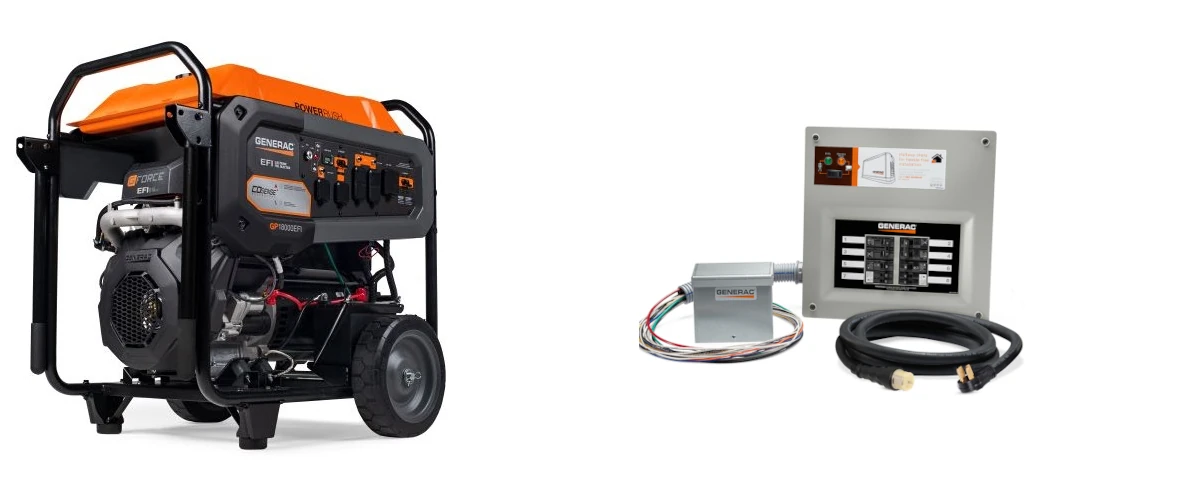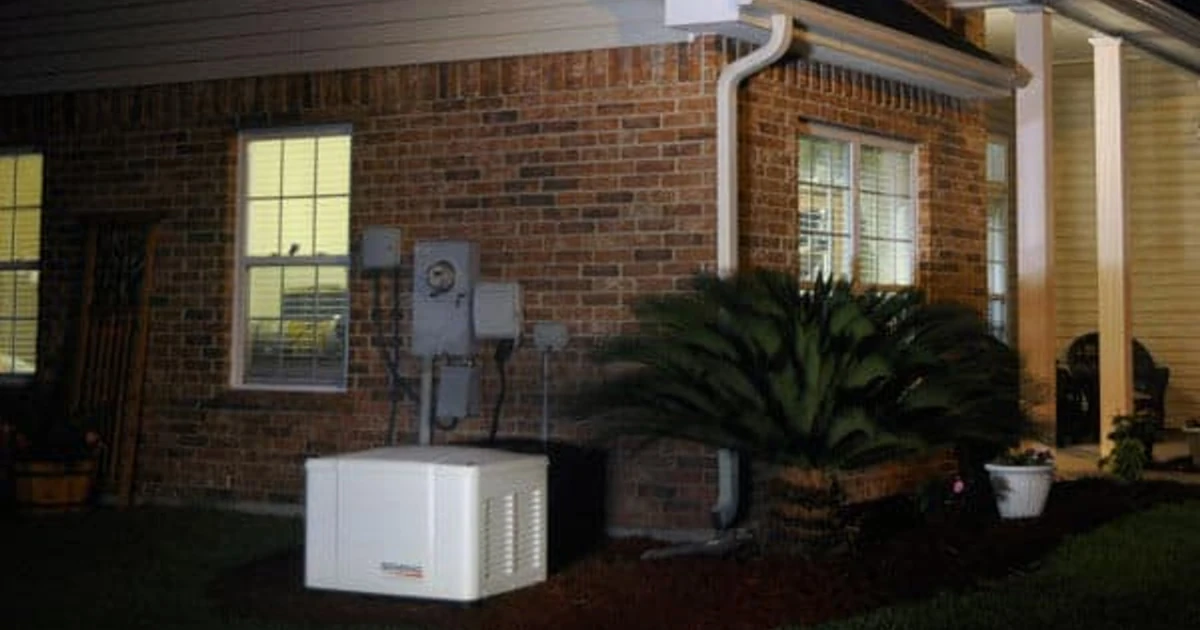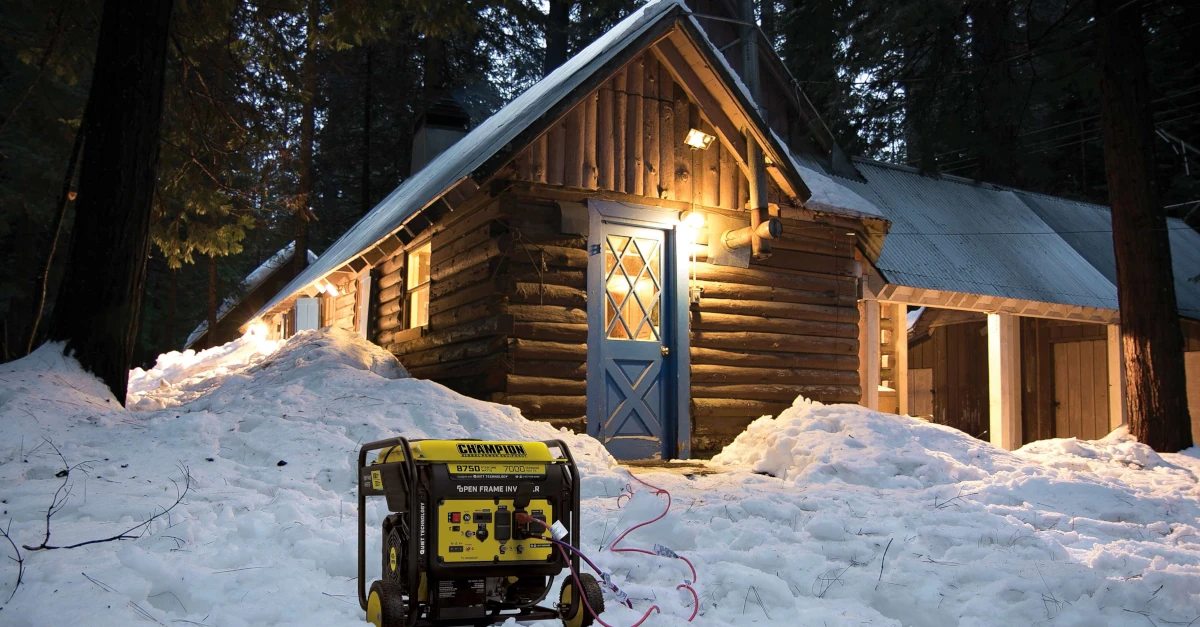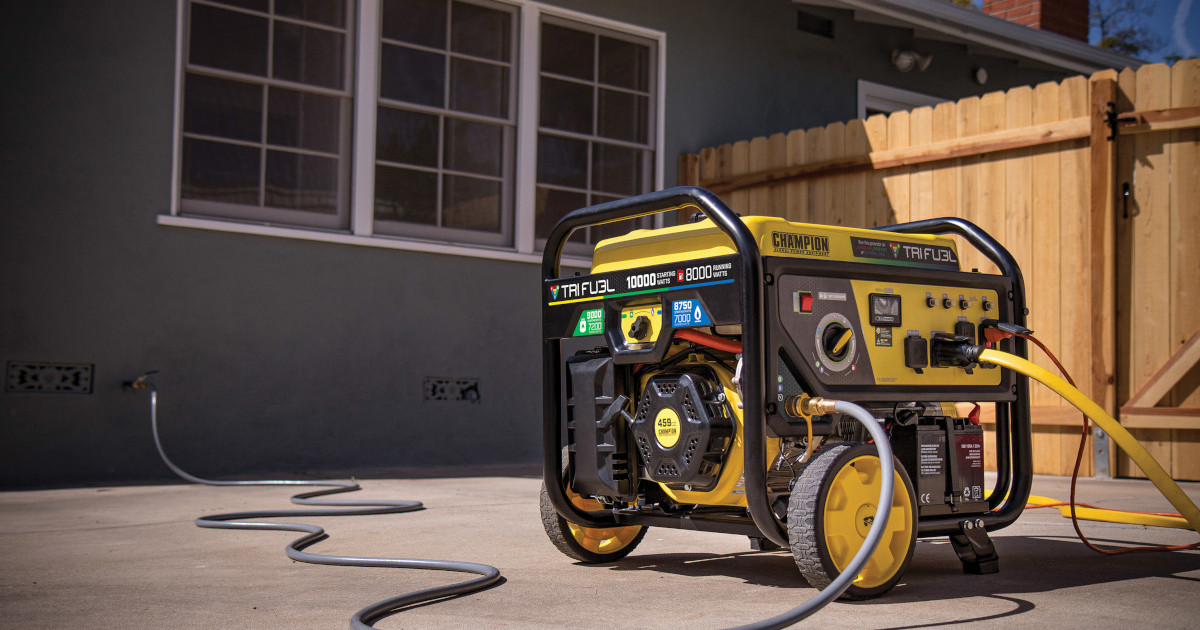How Big of a Generator Do I Need?
This question comes to us often. Usually, someone has a specific need and wants to understand which generator they should buy. In most cases, they are looking for a generator to run a house, probably during a power outage. Since 2011, the Federal Emergency Management Agency recommends everyone have a backup source of power as part of their emergency preparedness plan.
Every generator has limited capacity. It might be less than 2000 watts, but it could be much larger. Generators in power plants have capacities rated in Megawatts.
1 Kilowatt (kW) = 1000 Watts (W)
1 Megawatt (mW) = 1000 Kilowatts (kW)
1 Gigawatt (gW) = 1000 Megawatts (mW)
In this text, when we talk about generators, appliances, and loads, we’ll specify power in watts. We’re only going to convert to kilowatts when mentioning standby generators.
Before we talk about how big of a generator do I need, we need to explain a few facts about generator capacity. Specifically, the difference between starting watts vs running watts.
This Generac 18kW Portable Generator and manual transfer switch could power a home with a central air conditioner.
Starting Watts vs Running Watts
Starting Watts is a specification that relates directly to electric motors.
Electric Motors have two power requirements.
-
Starting watts is the power a motor needs to start turning and reach rated speed.
-
Running watts is the power a motor needs to run at rated speed under a full load.
When a motor is not turning, the coils act like a short circuit. The current (amps) is high for a very short time, typically less than 3 seconds, but it could be longer for very large motors under load. Before the motor starts turning, starting amps is high and gradually reduces until the motor reaches rated speed, when it draws only the full load amps.
Amps x Volts = Watts.
Example:
A refrigerator has a motor that runs a compressor. A typical household refrigerator in North America requires 120 Volts and 6.66 Amps to run. However, the starting amps for a refrigerator might be two and half times the running amps, or 16.75 amps to start.
The refrigerator needs:
- 16.75 Starting Amps x 120 Volts = 2000 Starting Watts.
- 6.7 Amps x 120 Volts = 800 Running Watts.
If you want to run your refrigerator on a generator, it must be able to supply at least 800 running watts and at least 2000 starting watts.
Important: Your refrigerator has specific power requirements. Use the information on the refrigerator’s appliance tag for the correct information. Appliance tags may refer to Locked Rotor Amps or LRA, and Full Load Amps or FLA.
Locked Rotor Amps = Starting Amps.
Full Load Amps = Running Amps.
Multiply Volts x Amps to find Watts.
Bottom line, a generator can only produce its starting watts capacity for a few seconds before its circuit breaker trips.
A smaller automatic home standby generator keeps your house powered, even if you’re not there to fuel it or connect it.
Generator Capacity in Watts or Kilowatts
Read the specifications for any generator you’re about to purchase. Different manufacturers use different labeling. Manufacturer X might name their generator for the MAX watts, or starting watts while Manufacturer Y uses a Running watts convention.
Another example is a generator capable of running on different fuels. As a general rule, portable generators produce the least amount of power on natural gas. Propane produces more than natural gas but less than gasoline. The manufacturer will probably name the generator for gasoline rated watts or starting watts. The 10,000 Watt Tri-Fuel that you intend to run primarily on natural gas may only produce 8000 watts.
1000 Watts (W) = 1 Kilowatt (kW)
10,000 Watts (W) = 10 Kilwatts (kW)
10,000W = 10kW
Check the Generator Starting Watts and Running Watts Capacity Before You Purchase a Generator. Note the significant difference between fuels for this tri-fuel generator. Decide which fuel you will use the most, then choose accordingly.
How Much Power Do I Need?
What size generator should I buy for home backup is a frequent question on a popular Q&A site. Sadly, more often than not, the answers given are short and provide too little information. Many answers specify a 3000 or 4000 watt generator as more than adequate.
Let’s look at the power requirements of a few home appliances, including a gas furnace, that we want to run with our generator during a power outage.
| Appliance | Running Watts | Starting Watts |
|---|---|---|
| Gas Furnace | 600 Watts | 1600 Watts |
| Refrigerator | 850 Watts | 2400 Watts |
| Freezer | 850 Watts | 2400 Watts |
| Microwave | 1000 Watts | 1000 Watts |
| Sump Pump | 500 Watts | 1700 Watts |
| LED Lights x 6 | 60 Watts | 60 Watts |
| Crock Pot | 300 Watts | 300 Watts |
| Window AC 10,000 BTU | 1500 Watts | 3000 Watts |
The Running Watts column totals 5660 Watts. Add a 20% to 25% margin because running a generator at the maximum rated capacity will only wear it out faster. The appliance with the highest starting watts is the Window A/C at 3000 Watts.
Minimum Running Watts: 5600 Watts + 25% Margin = 7075 Watts
(We can round 7075 to 7000 and still have between 20% and 25% margin)
Minimum Starting Watts: 7000 Watts + 3000 Watts = 10000 Watts
Notice how we rounded 7075 down to 7000. An exact margin is not required, but
To run everything on the list will require a generator capable of 7075 Running Watts and a Starting Watts capacity of about 10,000 Watts.
Choose a generator with the required starting watts and at least the minimum running watts.
For your own needs, substitute the appliances you want to run along with the running watts and starting watts required for each.
Generator Power Quality
Bargain brand portable generators have a reputation for dirty power. The alternator produces a very distorted AC signal instead of a true sine wave. If you plan to run household appliances and electronics, look for a generator with low distortion (Total Harmonic Distortion or THD) of less than or equal to 5 percent. Good portables, inverter generators, and standby generators produce power with lower total harmonic distortion.
If you want to run your home office off a generator during a power outage and use an uninterruptible power supply (UPS), plan to buy a generator with low harmonic distortion or the UPS will refuse to use the power.
Not all traditional portables have poor power quality. It all depends on the alternator design. Good alternators produce a clean, undistorted signal.
In figure 1, we have a pure, undistorted sine wave. In figure 2, a Harmonic signal with twice the frequency of the Fundamental signal results in a Distorted Signal. Notice how the harmonic imposes itself on the Fundamental signal, resulting in the distorted output. Typically, Total Harmonic Distortion includes the first 5 harmonics (1-5), each with twice the frequency of the previous, but less height (amplitude). Each harmonic adds more distortion to the output.
In a typical generator, the harmonics beyond the 5th don’t have enough amplitude to significantly affect the output.
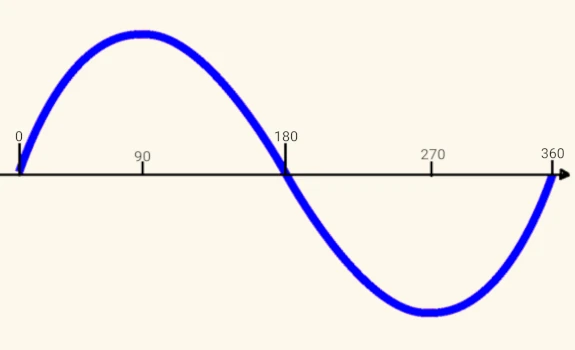
Figure 1. Ideally, the power output of your portable generator would be a perfect sine wave.
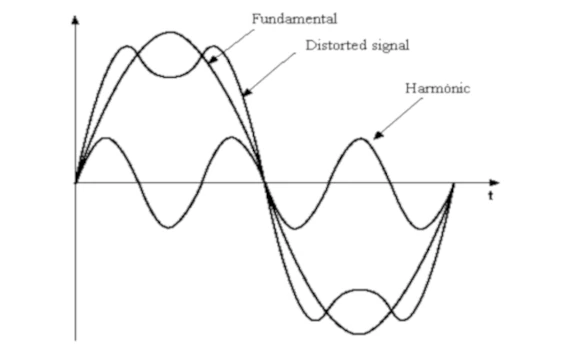
Figure 2. The harmonic signal frequency is twice the fundamental signal. At the fundamental’s highest peak, the harmonic is at it’s lowest peak. Summing the harmonic and fundamental distorts the output signal.
This inverter generator keeps the lights on and other essentials during a power outage at a log cabin.
Inverter Generators
It wasn’t very long ago that inverter generators had limited power. The first models to come out had ratings of less than 1000 watts at 120 Volts. Today, inverter generators exceed 10,000 running watts capacity and up to 16000 Starting Watts and supply power at 120 or 240 Volts. They are so popular that manufacturers of RV generators are starting to offer inverter generator models.
Inverters produce power differently than a traditional portable generator. A good inverter can produce cleaner power than a cheap bargain brand portable. Some sensitive appliances or electronics may refuse to run on power from a regular portable.
The problem arises when the traditional generator’s alternator distorts the AC signal from a pure sine wave to something that doesn’t look like a sine wave at all.
Most manufacturers specify their inverter generators by the starting watts instead of the running watts. A 2000 Watt Portable Inverter may only supply 1600 Running Watts.
An inverter generator engine varies its speed to match the power required. This reduces noise and improves fuel efficiency. A traditional portable runs at a constant speed, usually 3600 RPM, and increases fuel use to keep up with the power demand.
Most inverter generators can run in parallel, effectively doubling their power output. Need some power, run one generator. Need a lot of power, run both generators in parallel.
This Tri-Fuel generator is running on Natural Gas through the gray hose connected to the home’s natural gas line. Tri Fuel Generators and Dual Fuel Generators offer extended runs times and flexibility without storing highly flammable liquid fuels.
Dual Fuel and Tri-Fuel Generators
Dual fuel generators run on gasoline or propane. Tri-Fuel generators run on gasoline, propane, or natural gas. If you don’t have access to natural gas, it probably isn’t worth spending the extra money on a tri-fuel model.
Dual Fuel and Tri-Fuel Generators may produce different amounts of power on different fuels. A dual fuel portable model probably produces less power on gasoline than propane. Natural gas on a tri-fuel generator produces less power than propane.
Propane is much easier and safer to store and has a longer shelf than gasoline. Natural gas comes to your house via local supply lines and doesn’t require storage. The tradeoffs are fuel costs, storage, and the amount of power produced.
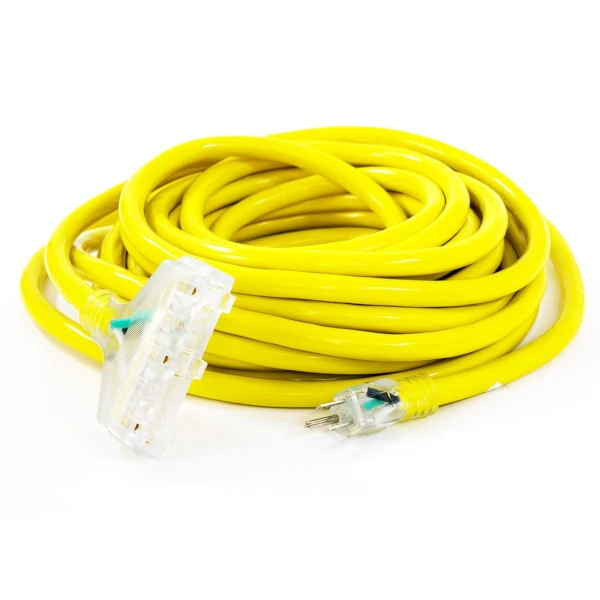
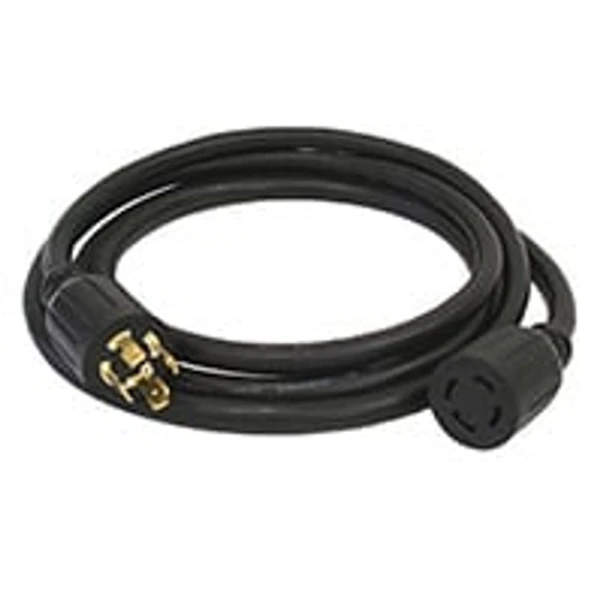
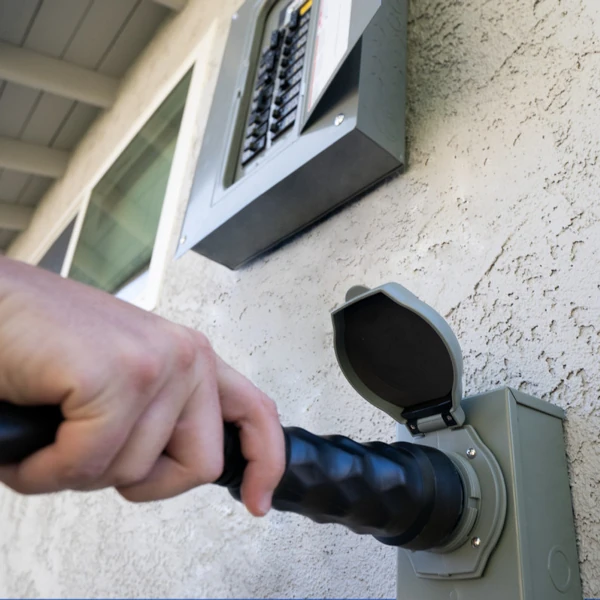
Connecting Your Generator
At a minimum, use outdoor-rated heavy duty extension cords with an ampacity equal to or greater than the outlet they plug into. A 15-Amp outlet required at 15-Amp extension cord with 14-gauge wire. 20-Amp outlets require 12-Gauge extension cords with a 20-Amp rating. Don’t skimp. However, there is a better way to make connections than using multiple extension cords.
The furnace in the appliance table is a hard wired appliance. In order to keep your home warm during a power outage, the only connection that will work is one that supplies power directly to the furnace’s circuit breaker. The safest (and legal), way to do uses a manual transfer switch.
Run an approved generator cord from the 120/240-Volt outlet on the generator to the inlet box, which connects to a 30-Amp manual transfer switch. You can also have a 50-Amp outlet and cord to a 50-Amp inlet box.
Good to know:
-
- A 7200 Watt Generator produces 30-Amps
- A 12000 Watt Generator produces 50-Amps
Manual Transfer Switch Advantages
-
- Run hard-wired appliances (central AC, furnace, well pump, etc)
- It’s easy to power different living areas of your house.
- Only one cord and no one will trip over it.
- Faster setup
Making a Choice
For home backup, a Dual Fuel or Tri-Fuel is usually the best choice in terms of flexibility and fuel storage. Natural gas is almost always cheaper than gasoline or propane. Propane is easier to store than gasoline. If your home already has natural gas or propane, it’s a logical choice to select a generator that can run on fuel you already have.
With our ever-increasing reliance on electrical power, it makes sense to buy more than the bare minimum. On the Q&A site mentioned earlier, one answer suggested that 3000 watts was more than enough power. The answerer talked about how they would unplug the refrigerator to make coffee or heat food in the microwave.
Certainly, you can manage your power that way, but why would you want to? Need to use the hair dryer? Unplug the refrigerator, drag the cord down the hall and plug in the hair dryer. A small generator provides two choices:
- Plug in a couple of essentials and give up everything else.
- Switch from one appliance to the next.
Instead, spend a little more to get the power you need. Install a manual transfer switch and power everything important plus conveniences. It’s safer, easier, and worth the expense.


